Coffee roasting principle Coffee Bean Baking steps detailed explanation Coffee Bean Baking Machine style recommendation
Professional coffee knowledge exchange More coffee bean information Please pay attention to coffee workshop (Weixin Official Accounts cafe_style)
introduction
Then, after learning about the ingredients, this lesson will learn about the principles of coffee roasting and some coffee roasting terms.
Coffee roasting is very similar to food cooking, using heat to make food more palatable, more audible, and more beautiful. The goal of roasting is to find the best way to roast a coffee bean.
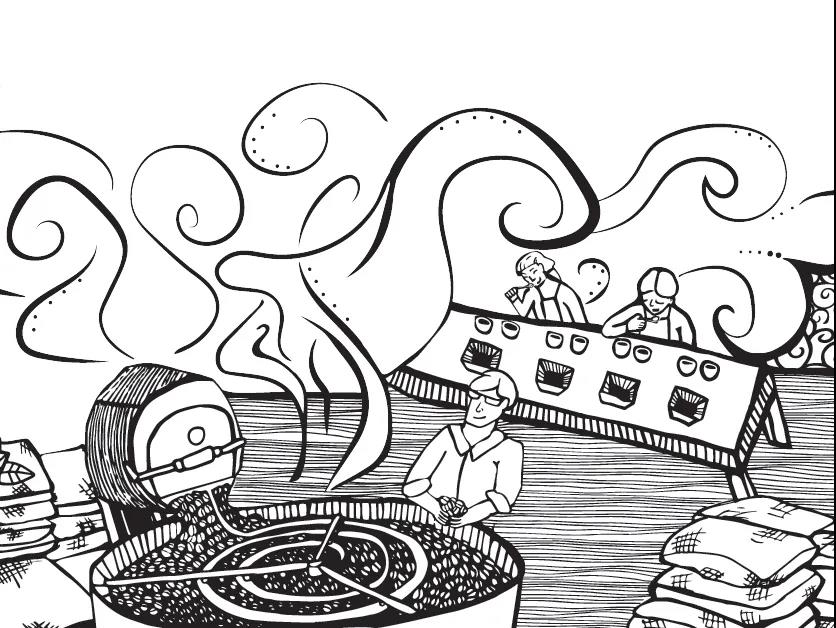
Learn about baking machines
Baking appliances are various, hand nets, iron pans, popcorn machines can roast coffee beans. But today only for professional baking machine, divided into direct fire type, semi-direct fire type (semi-hot air type), hot air type.
Direct fire type: the use of flame direct heat transfer to coffee beans, the advantage is the performance of coffee flavor and aroma ability is good, the disadvantage is difficult to control, easy to appear baked coffee beans, sandwiched green beans phenomenon. It's a test of the baker's skill.
Semi-direct fire type: the use of flame heating non-porous drum, flame can not directly contact with coffee beans, but through the metal drum heat and heat conduction air holes to heat coffee beans. The advantage is stability. Most roasters use semi-direct fire to produce coffee beans.
Hot air type: Use blower to suck in air, and then let the air pass through a heating coil to raise its temperature, using hot air as a heating source to roast coffee beans. The advantage is that it is easy to control the temperature and is not easy to burn. The disadvantage is that the flavor and aroma performance strength is insufficient compared with the former two.
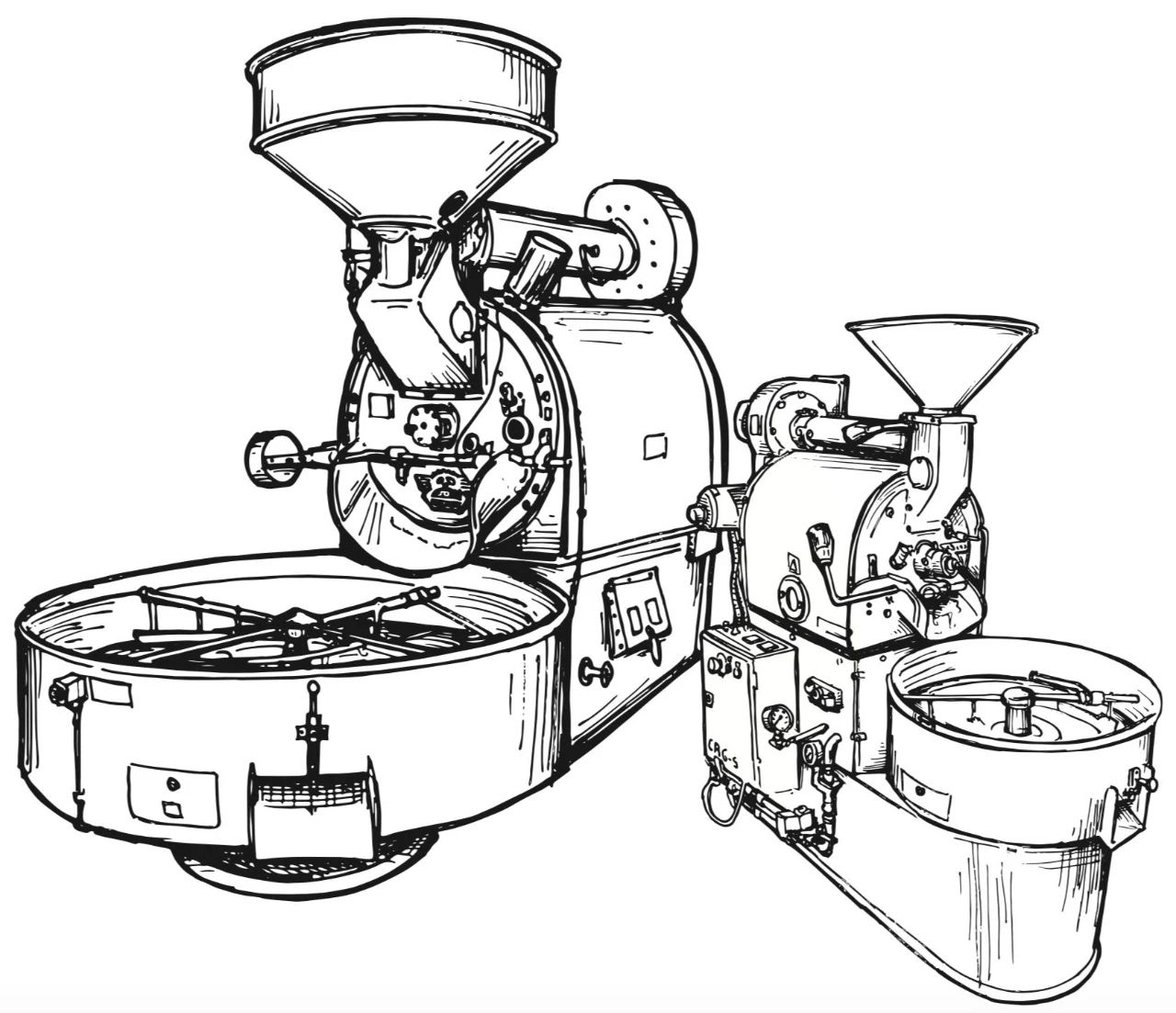
Terms to know about baking
There are often some key nodes in baking. Let's understand the names and meanings of these key nodes.
Bean entry point: This is the node where green coffee beans enter the boiler, and it is also the beginning of the baking curve calculation time. Generally, the temperature of the bean entry point will be higher. The preset temperature of the beans is different according to the different amount of green beans or the green beans of different producing areas. Generally, the temperature of beans will be controlled between 160-200℃.
Return temperature point: coffee beans will quickly absorb heat after entering the boiler, and the furnace temperature will continue to decline, when it drops to a certain temperature, stabilize, and then rise, this inflection point is called return temperature point.
Yellowing point: In about 6 minutes, the green beans with more water content begin to turn yellow, and the wrinkles on the bean surface slowly appear. This point is called the yellowing point.
The first burst: commonly known as "a burst", before a burst, coffee beans are an endothermic state, when the beans accumulate enough energy and expansion will occur burst, release heat, generally judge the beginning of a burst refers to hearing sporadic 4-5 sound when determined.
Second Explosion: If we don't choose to come out, but continue to develop, there will be a quiet period of 1-2 minutes after the end of the first explosion, and then there will be a second explosion. It was also 4-5 sounds to judge the start of the second explosion. The explosion sound of the second explosion was not as strong as the explosion sound of the first explosion, but appeared to be a low sound.
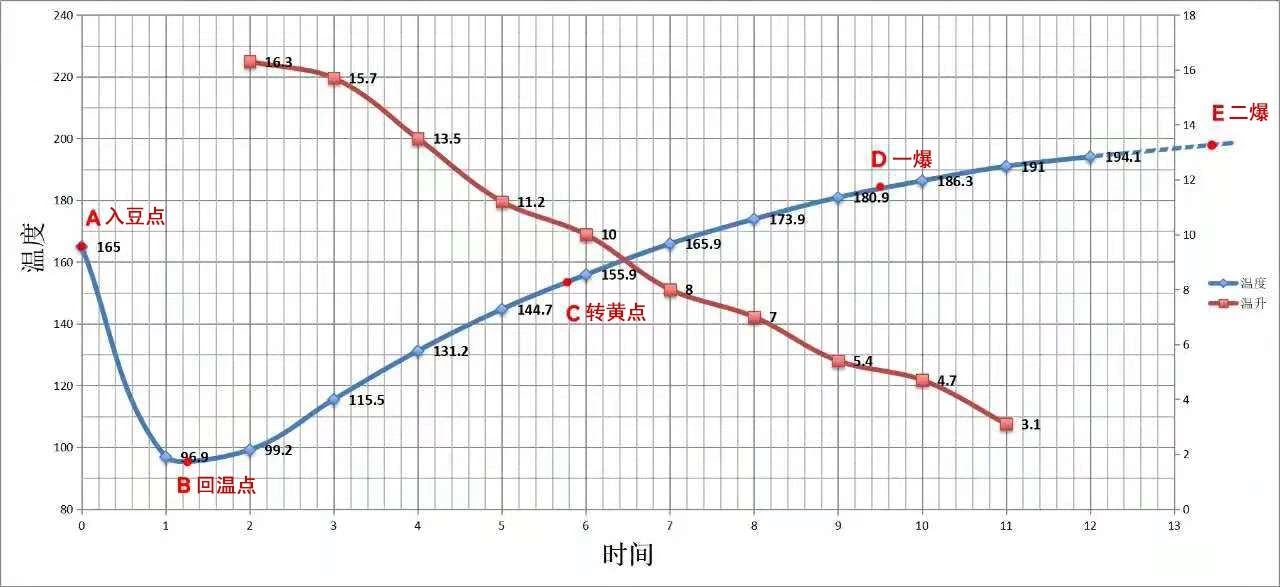
And between these nodes, there is also a time between the two points.
Dehydration period: refers to the time after the beans into the yellow point, although the dehydration process throughout the roasting period, but this period is the coffee green beans evaporation of the most water period. The length of the dehydration period depends on the moisture content and hardness of the green coffee beans.
Intermittent stage: refers to the yellow point to the beginning of a burst, this period, the coffee beans surface turned light brown, began to expand and release steam, emitting toast aroma.
Development period: refers to the period from the beginning of an explosion to the oven. After an explosion, coffee beans are "ripe" in the physical sense, and the amount of time for development also determines the flavor trend of coffee beans. Very simple summary for underdevelopment will occur in the phenomenon of intergrowth and lack of flavor. Short development time tends to sour tonality, long development time tends to bitter tonality, and excessive development time may also smooth out coffee flavor.
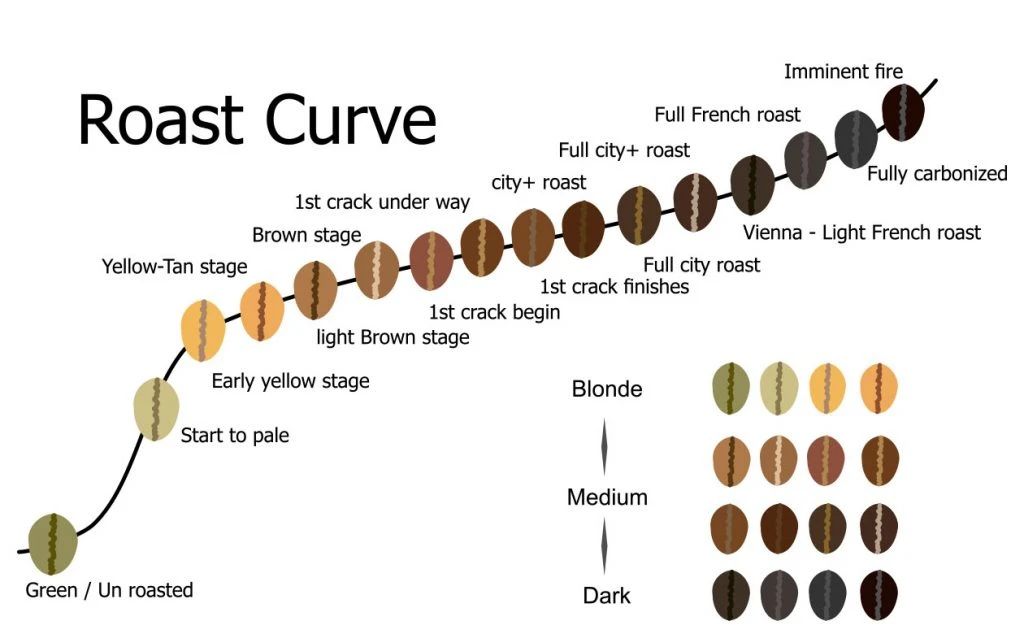
Because the development degree of coffee beans is different, the degree of roasting is also different, according to the color value of coffee beans divided into eight roasting degrees.
Agtron Color #95: Light Roast
Time of release: one explosion is about to end
Agtron Color #85: Cinnamon Roast
Release time: before and after the end of the explosion
Agtron Color #75: Medium Roast
Release time: after the end of the explosion
Agtron Color #65: High Roast
Time of release: quiet period between first explosion and second explosion
Agtron Color #55: City Roast
Time: Second explosion begins
Agtron Color #45: Full City Roast
Time: before the second explosion
Agtron Color #35: French Roast
Time of discharge: when the second explosion is dense
Agtron Color #25: Italian Roast
Time to bake: oil begins to seep out of bean table
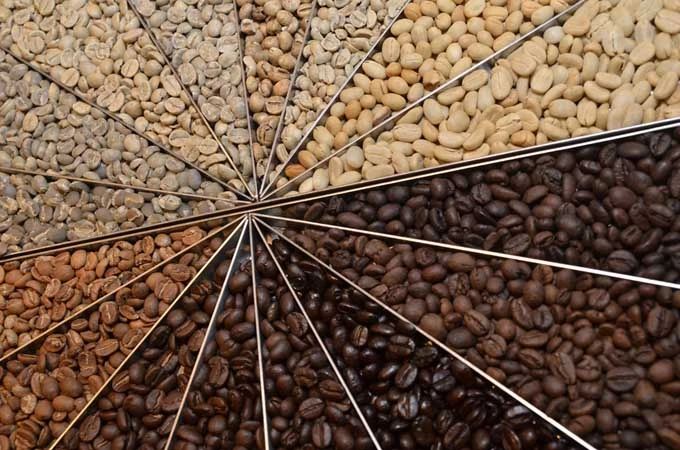
What can we actually manipulate in baking?
Take the semi-direct fire roaster as an example, we can only control the beans (time, temperature), fire control, damper control and the time of discharge.
Fire regulation is similar to slow fire and fierce fire when we cook. Open the fire will make the heating speed up, reduce the fire will make the heating slow, and in the coffee roasting in different periods of the heating is not the same, which requires us to regulate the fire.
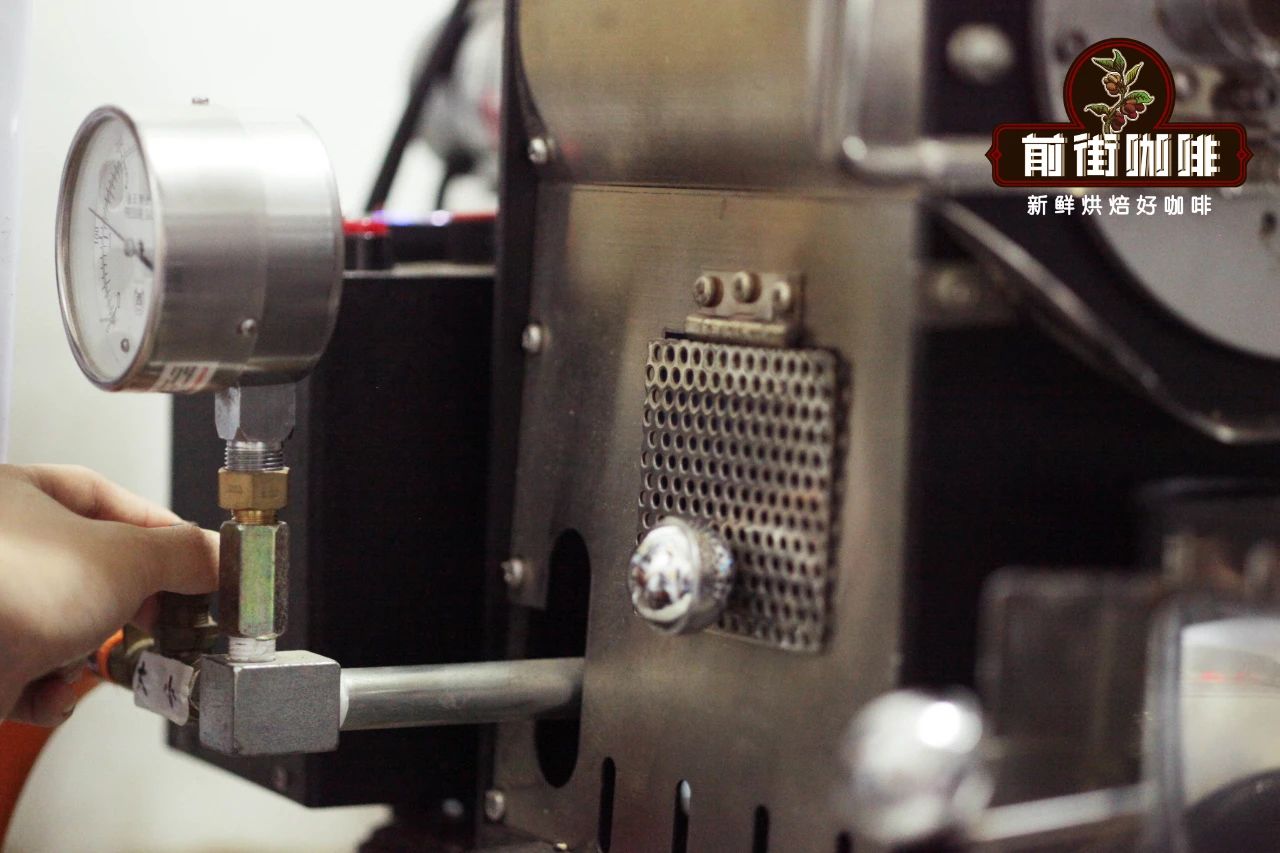
Damper function is to extract water vapor and silver skin in the boiler, as well as auxiliary fire control temperature. At the beginning of an explosion, more smoke will be produced. At this time, it is necessary to open the damper to remove the smoke, which will avoid the smoky feeling of coffee. However, if the heat is insufficient to pull down the strong wind door, it may cause a loss of temperature and lose the flavor of the coffee.
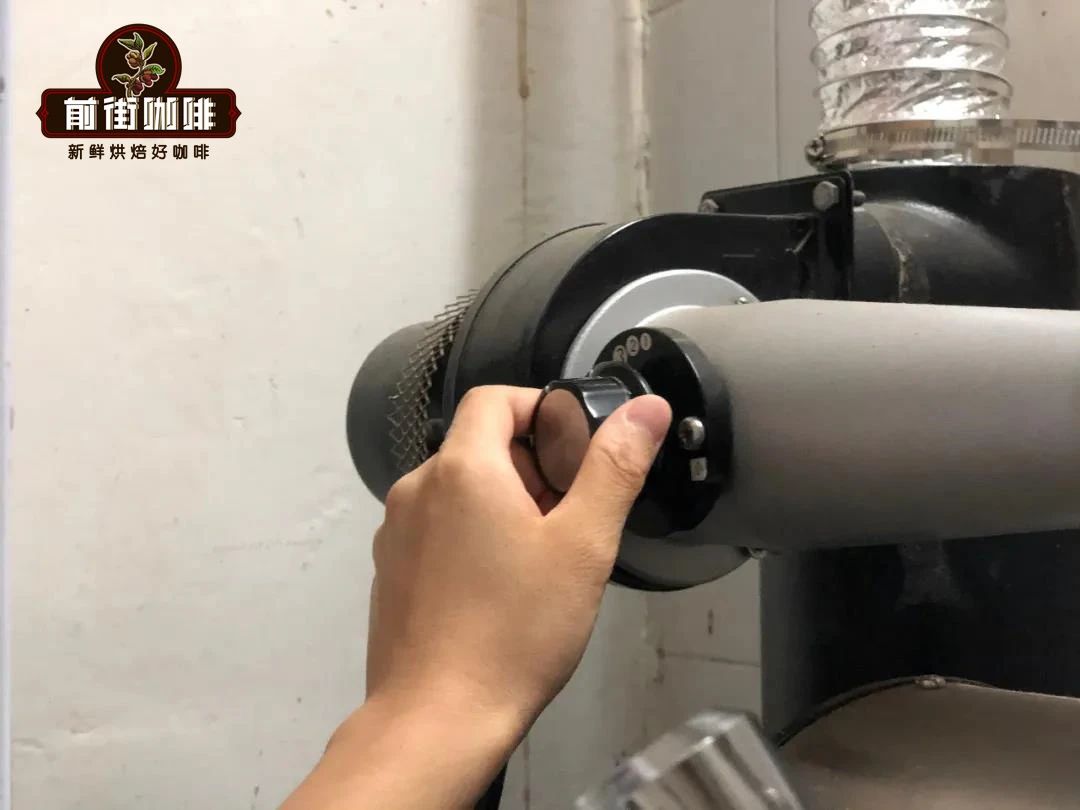
Learning coffee roasting has a long way to go. Only when the basic theory is solid can we not be caught off guard. And this process is always boring!
More fine coffee beans, please add private WeChat Qianjie Coffee, WeChat: kaixinguoguo0925
Important Notice :
前街咖啡 FrontStreet Coffee has moved to new addredd:
FrontStreet Coffee Address: 315,Donghua East Road,GuangZhou
Tel:020 38364473
- Prev

Easy to learn but difficult to learn the three levels of coffee roasting
Coffee roasting is a science that is easy to learn but difficult to master. Like cooking, anyone can cook food and eat it to satisfy hunger. But what level of food do you cook? How far and how big is the difference from "able to cook" to "Michelin three-star" chefs? The same is true of roasted coffee. Being able to bake coffee does not mean that it produces good coffee. We can simply put
- Next

The roasting stage of coffee beans can be divided into three stages
The key to the popularity of roasted coffee lies in the aroma and taste of roasted coffee, because the coffee bean itself does not have any special taste. Baking is to change and reorganize the substances inside the raw beans to form a new structure and become people's favorite drink with a strong and mellow flavor. The roasting of coffee is a kind of high temperature coking (Pyrol
Related
- Beginners will see the "Coffee pull flower" guide!
- What is the difference between ice blog purified milk and ordinary milk coffee?
- Why is the Philippines the largest producer of crops in Liberia?
- For coffee extraction, should the fine powder be retained?
- How does extracted espresso fill pressed powder? How much strength does it take to press the powder?
- How to make jasmine cold extract coffee? Is the jasmine + latte good?
- Will this little toy really make the coffee taste better? How does Lily Drip affect coffee extraction?
- Will the action of slapping the filter cup also affect coffee extraction?
- What's the difference between powder-to-water ratio and powder-to-liquid ratio?
- What is the Ethiopian local species? What does it have to do with Heirloom native species?

